Google Local Business Cards are how location-specific, smaller companies are using digital real estate to accrue physical rewards.

How so?
Business Cards are featured at the top of SERPs (on the right hand side) and provide all pertinent information online users need to know about a given business.
So instead of competing head to head on high-competition keywords against larger companies, small businesses with brick-and-mortar locations can propel to the top of SERPs with little investment.
All it takes is an optimized Google My Business account.
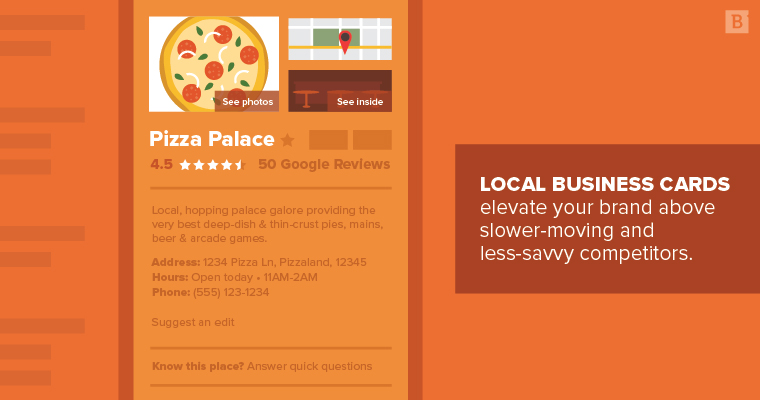
What are Local Business Cards?
Google’s Local Business Cards are SERP features that display business-level information to users.
You’ve probably seen quite a few. Here’s an example (a great establishment if you’re in the area):
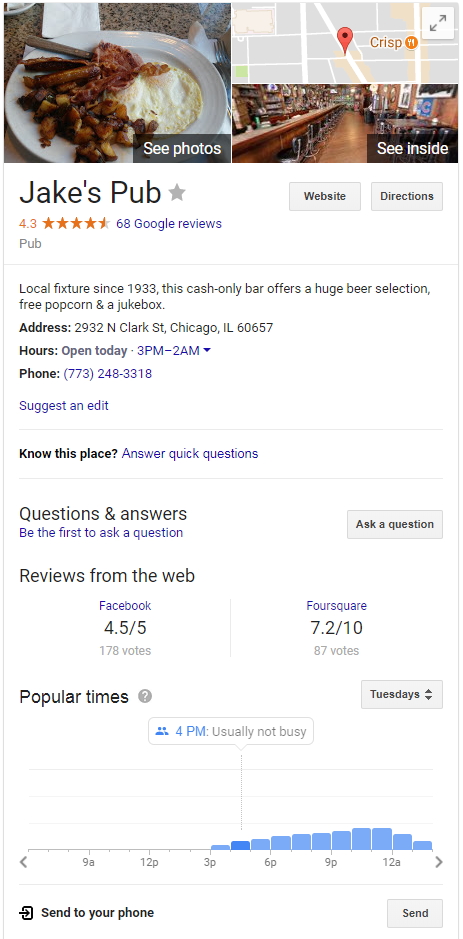
From this “card,” you gather a number of key insights about Jake’s: their contact info, their rating on Facebook and Foursquare, when they’re busy, images, directions, their website and a short snippet of context.
Scrolling down a little further, you also uncover the following reviews and similar establishments:
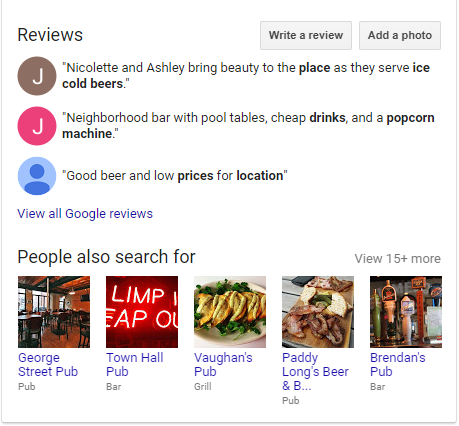
Within an instant, users learn that Jake’s Pub has great reviews, a huge beer selection and a convenient location: Jake’s didn’t need to churn out blog posts or overhaul their digital marketing – they just had to update their Google My Business account.
A quick history
Local Business Cards aren’t secret per se, but they are an underutilized marketing tactic that is relatively new to the SEO scene.
Here’s a short timeline of this feature’s evolution:
- January 2016: First Local Business Cards appear in SERPs, showing information on presidential candidates only (referred to as “candidate cards”).
- March 2016: Google rolls out Google Posts (an expanded version of Local Business Cards) to limited business users.
- June 2017: Google Posts grows to include Knowledge Panels, events, products and more available to all business users.
Now, social sharing buttons, direct links, purchase functions, videos, animated gifs, content blurbs and event alerts are accessible by all verified Google My Business users and are featured in both desktop and mobile SERPs.
Put simply, it’s mainstream.
What to know about Google Posts
Google Posts is the overarching term that covers all things Local Business Card-related, so insert it into your lexicon (and strategy!) pronto.
Google defines this feature as “up-to-date posts from verified people, places or things, directly in search results.”
These Posts can appear in a number of different visual formats, including:
Knowledge Panels
Any text, image, video, animated gifs, events or business information that appears in your Local Business Card. These results are featured in a scrollable carousel display.
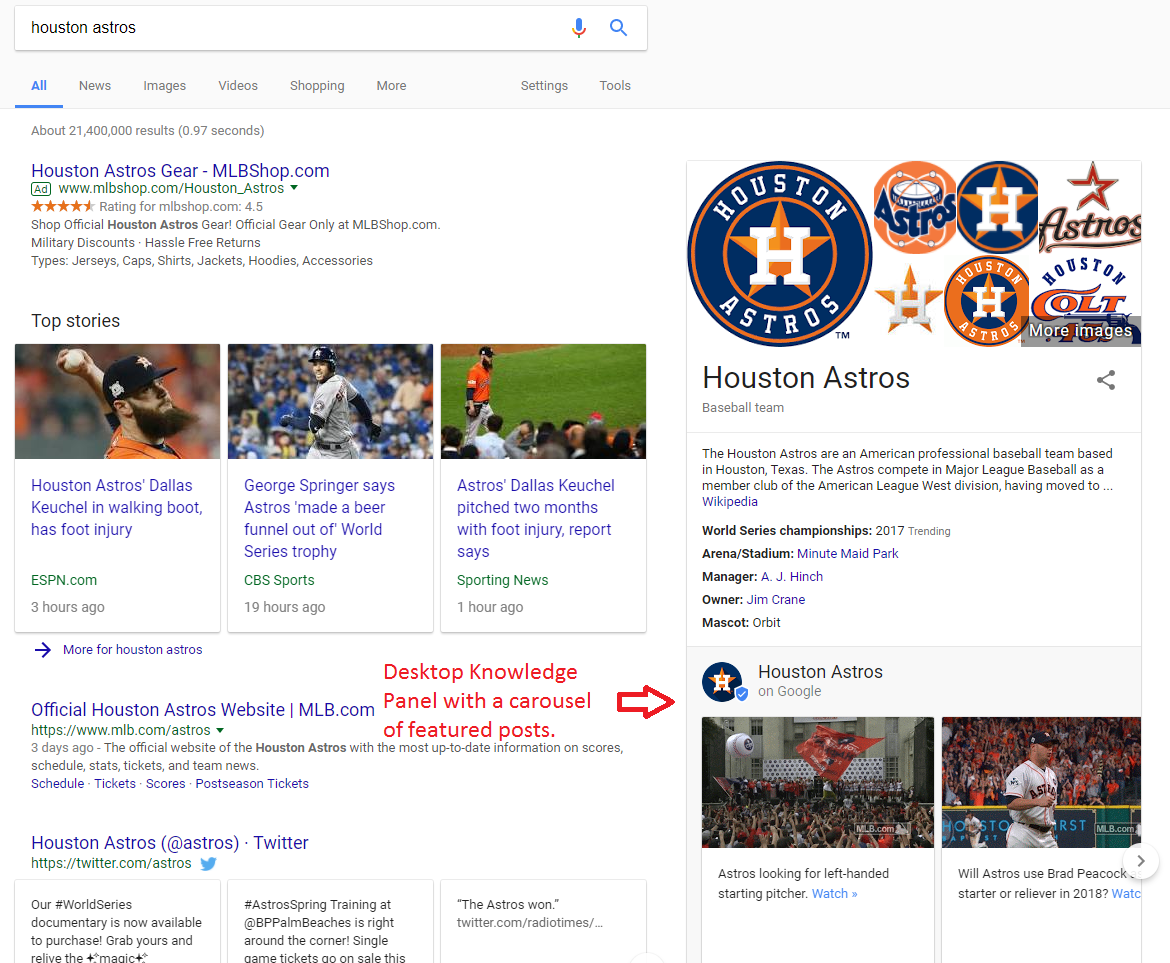
3 Packs
Local search results organized into three displays based on proximity and relevance.
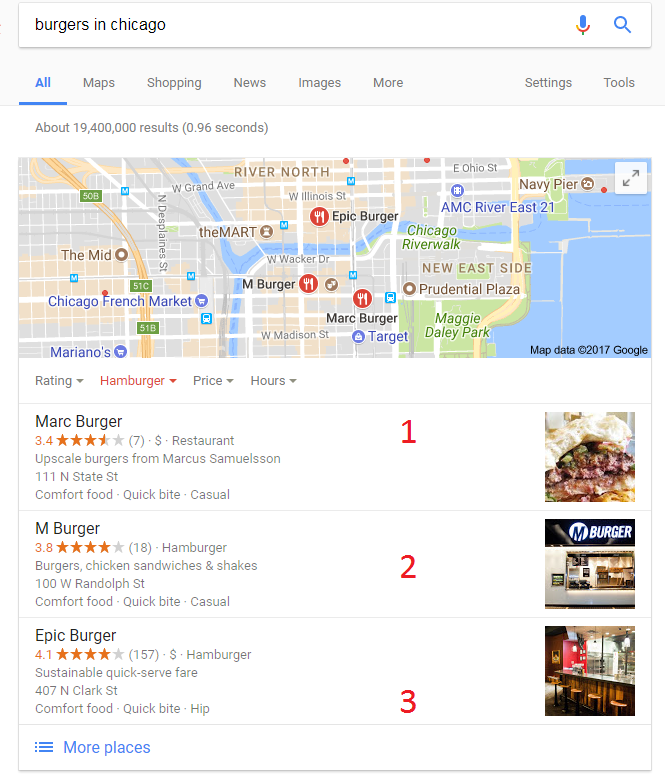
Mobile Carousel
On mobile devices specifically, the information featured in a Knowledge Panel carousel is moved into the single column of SERPs (desktop Knowledge Panels live to the right of SERPs) for a more native, user-friendly experience.
The same Houston Astros’ videos now appear here:
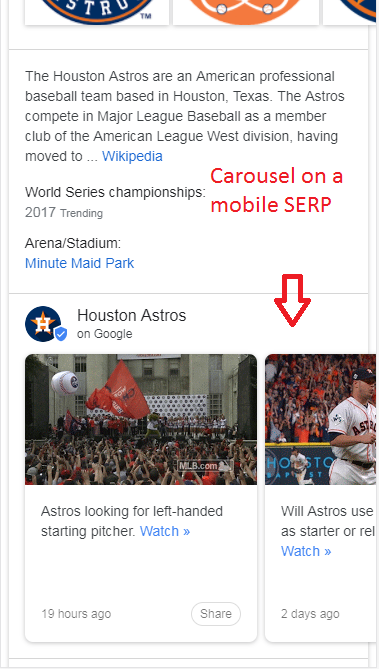
Within your posts, you can also use specific calls-to-action based on the next steps you wish users to take. Those options are:
- Learn more.
- Reserve.
- Sign up.
- Get offer.
- Buy.
Lastly, you can prompt users to share Google Posts directly from the Knowledge Panel.
Optimizing your Google My Business account
To ensure your content is properly displayed in SERPs, you must address several items in your Google My Business account. Among them are:
- Become verified (do that here).
- Fill out all applicable business information in the dashboard. Name, address and phone number are most important.
- Use UTM codes to track click activity. Custom URLs for each CTA link allow you to learn more about users through Google Analytics than what may be available through Google My Business alone. (URL generator here.) A Google My Business API is available for integrating enhanced campaign tracking.
- Decide what you want to highlight about your company: sales, promotions, events, etc.
- Do not keyword-stuff your posts.
- Select images that are 750 X 750 and centered so Google doesn’t display grainy photos that are chopped off.
- You can produce up to 300 words of text within a Google Post, but only the first 100 characters will display in the Knowledge Panel snippet. Similar to a meta description, ensure this doesn’t get cut off by Google.
- Post as much as you want, but do so regularly. Posts are only live for seven days, and you can include up to 10 at a time to be featured in the carousel. About 2.5 of these posts will be viewable on a normal SERP display – the rest are accessible via scrolling right.
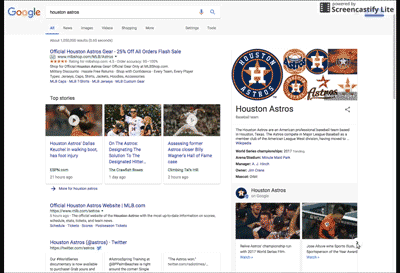
Beyond direct action within your Google My Business listing, you can also encourage customers to leave reviews of your company and answer questions reviewers may have.
How Local SEO is impacted
Local Business Cards elevate your brand above slower-moving and less-savvy competitors.
Google states 82 percent of people use search engines to find information on local businesses, so getting in front of those searchers with fresh, factful context is immensely beneficial to search presence.
Additionally, 70 percent of people look at multiple businesses online before deciding which to purchase from – are they going to buy from the guy with no physical address and a photo of a rundown building or you, the business owner with a sleek, presentable listing with plenty of stellar reviews?
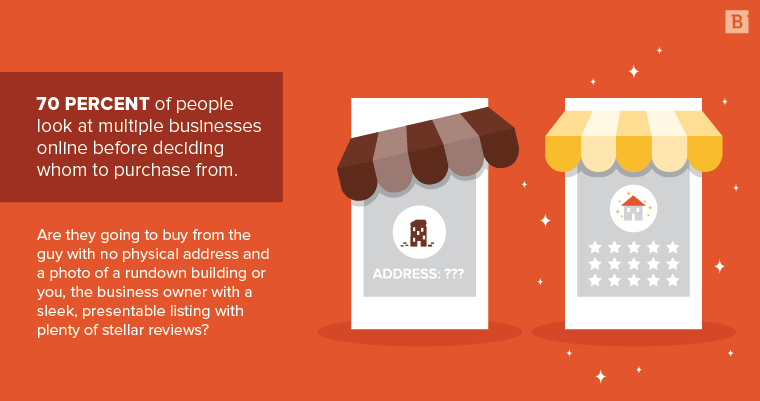
In many cases, Local Business Cards are more valuable than an updated Facebook page or a great website. Local searchers seek specific information, and they want it quickly – most don’t have time to click through successive results or links, so you have a single chance to capture their business based on first impression alone.
As more businesses update their Google Posts, SERP crowding will increase. And, depending on device, 100 percent of the visible, above-the-fold SERP real estate will feature information based on your Google My Business activity, should a user search for services you provide. That is to say, you cannot forgo this Local SEO tactic.

How to win at Local SEO in 2018
Winning at Local SEO requires a combination of Local Business Card optimization and general search presence hygiene.
Here are immediates actions to consider:
- Optimize title tags on all web pages.
- Keep meta descriptions within character limits (not a direct ranking factor but an important visual cue for readers).
- Solicit online reviews from customers (this is the most prominent Local SEO ranking factor).
- Target long-tail, location-specific keywords in your content and listings.
- Clean up off-site SEO factors like Yellow Pages, Yelp and social media so that all business information is updated and accurate and that reviews/comments are responded to.
- Optimize for mobile responsiveness and AMP-enabled posts.
- Place labels with relevant, clickable information about your business on Google Maps.
The SEO implications of local search optimization are far-reaching, and it’s important for small businesses to focus their marketing efforts on what is likely to have the most impact in 2018. And that’s high-quality business listings.






